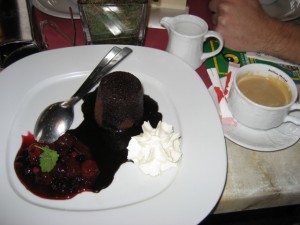The Menu: Reserved Collection
![ht1396[2]](https://blog.itscactus.com/wp-content/uploads/2013/05/ht13962.jpg) Though we firmly feel that each and every piece of Haitian metal sculpture we carry at Beyond Borders is a wonderful piece of folk art, we have to admit a solid truth: Some pieces are wonderful, and some are remarkable. Those listed in our “Reserved Collection” section are those we consider to be the latter. Many of our sculptures are purchased as decorative pieces; that is they are works of handmade folk art that are destined to be used to embellish a space. They are fun, attractive, and have popular appeal – all well and good. Those sculptures in our “Reserved Collection” are works of higher ambition. They represent what we believe to be the finest of the art form. These are the pieces that serious collectors seek.
Though we firmly feel that each and every piece of Haitian metal sculpture we carry at Beyond Borders is a wonderful piece of folk art, we have to admit a solid truth: Some pieces are wonderful, and some are remarkable. Those listed in our “Reserved Collection” section are those we consider to be the latter. Many of our sculptures are purchased as decorative pieces; that is they are works of handmade folk art that are destined to be used to embellish a space. They are fun, attractive, and have popular appeal – all well and good. Those sculptures in our “Reserved Collection” are works of higher ambition. They represent what we believe to be the finest of the art form. These are the pieces that serious collectors seek.
So what makes them special? True folk art, according to the venerable Art Institute of Chicago, “is that which represents a unique mixture of vernacular aesthetics, personal expression, popular demand, historical fascination, memory, sentiment and patriotism.” The pieces in the “Reserved Collection” meet those criteria quite succinctly. They capture in metal sculpture the spirit of Haiti; its voodoo, its slave heritage, its island geography, its freedom, raw edges, weirdness, elegance and pride. The conveyance of these characteristics is what anchors Haitian metal folk art to value and staying power, long after the currents of decorative fashion have shifted their course.
Take for example this sculpture by Michee Ramil Remy. (HT1396) Its rough-cut execution mirrors the farmer and his rough-cut life. Scratching a living out of the soil, wresting his subsistence from the land as do nearly half of his countrymen today. The scene also harkens back to the history of Haiti as French colony, the sugar plantations being hewn under the tropical sun by the backbreaking labors of its slave population. The faces of the farmer and his daughter are enigmatic. Perhaps in them is the reflected the values of a working family and the satisfaction of a verdant, bountiful harvest, along with the sad acknowledgement that life is still very physical, and very hard. In his distinctive primitive style, Michee hammers out the essence of that existence.
You will very quickly notice, when viewing the Reserved Collection, that none of the pieces are priced. In fact, items within that category are not currently available for sale. Of course, you can always inquire as to whether the status of a particular piece could change, and perhaps you should, if you really, REALLY love it and want to know. If nobody asks the question, there isn’t anybody to say yes to….

 This is just my opinion, mind you, and maybe it’s really just me. But I think art acquisition ranks right up there with food and sex in terms of hedonistic drives. Anybody else? So why is that? What triggers that first impulse to buy art? And then what makes us feel compelled to buy more? When does the act of purchasing a single piece of art become a full-on libertine pursuit? And if we are so driven, how do we pursue it as gourmands, and not gluttons?
This is just my opinion, mind you, and maybe it’s really just me. But I think art acquisition ranks right up there with food and sex in terms of hedonistic drives. Anybody else? So why is that? What triggers that first impulse to buy art? And then what makes us feel compelled to buy more? When does the act of purchasing a single piece of art become a full-on libertine pursuit? And if we are so driven, how do we pursue it as gourmands, and not gluttons?
![5596[2]](https://blog.itscactus.com/wp-content/uploads/2012/08/559625-156x300.jpg)